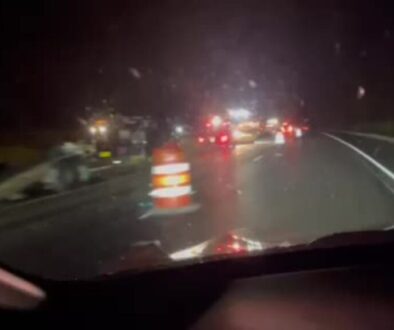ARKANSAS LOOKS AWAY FROM TOLLS TO PAY FOR I-49 BRIDGE, LANES

By Noel Oman, Arkansas Democrat-Gazette, November 19, 2018
The Arkansas Department of Transportation will explore other options after a study revealed that using tolls to finance the construction and operation of a stretch of Interstate 49 wouldn’t raise the needed revenue.
The department looked at using tolls to build, maintain and operate a new 13.7-mile section of Interstate 49 from Interstate 40 at Alma in Crawford County south to Arkansas 22 at Barling in Sebastian County. The section also includes a new bridge over the Arkansas River, which agency officials say is a major cost driver.
The route would improve the movement of people and goods in western Arkansas by providing another river crossing and, more broadly, serve as a critical piece in completing a congressionally-designated high-priority corridor connecting Kansas City, Mo., to south Louisiana while passing through Northwest and southwest Arkansas.
In Arkansas, I-49 is complete between Bentonville and Alma and between Texarkana and the Louisiana border. In Missouri, it is complete except for a section between Pineville, Mo., and the Arkansas border. I-49 is complete in Louisiana south to Lafayette, La., except for a connection through Shreveport.
Building the project — ideally, as a four-lane route — would cost an estimated $776 million, an amount that the department doesn’t have available.
The study by infrastructure consultants HNTB Corp. found that tolls wouldn’t raise anything close to that amount.
Building it as a four-lane toll road would raise construction costs to $787 million. Operating it as a toll road and routine maintenance costs would add another $118 million. Another $141 million would need to be set aside for major maintenance and reconstruction, not only for the roadway but for the tolling facilities. Toll facilities generally have to be replaced every 10 years.
An analysis used to “understand the revenue potential” of the toll project found that the optimum toll rate for the section was 15 cents per mile, resulting in a $2 toll for the section’s entire length. Built as a four-lane, the route would generate $243 million annually.
In other words, not much in comparison to the costs associated with the project, Scott Bennett, the department director, said at a meeting of the Arkansas Highway Commission last week.
“You have to go ahead and pay to build it and then you could charge a toll for the cost of collecting the toll,” he said.
But given the importance of the project, its high cost and the limited amount of money the department has available, it was prudent to look at alternative ways to help defray the cost, including tolls, according to the Arkansas Highway Commission, which authorized the study two years ago.
Still, it is but the latest project in Arkansas to fall short as a toll facility.
“We can’t seem to get tolls to work,” Tom Scheuck, a member of the Arkansas Highway Commission, said at a meeting of the commission Wednesday.
It isn’t like the department hasn’t tried.
“We’ve been through more than 50 tolling studies in the last 50 years — 50,” Bennett said.
A handful have come close to closing the gap between what toll revenue would raise and what it would cost to build and maintain.
Most notably, the department looked at using tolls to widen Interstate 40 between North Little Rock and West Memphis to six lanes from four.
A study found it feasible “if you could charge a toll for all the lanes,” Bennett said.
But federal law limits the use of tolls to newly constructed lanes.
Still, people such as state Rep. Mathew Pitsch, R-Fort Smith, say the route will improve mobility and economic development in western Arkansas.
His district includes Chaffee Crossing, which is a growing area just south of Barling. The area saw a surge in growth after a section of I-49 was built south from Barling.
“The economic development we saw with that four-lane road … is huge,” said Pitsch, who does work for the Western Arkansas Regional Intermodal Transportation Authority. “We’ve probably got 2,000, maybe 3,000 new homes, we’ve got 8,000 new employed people at Chaffee Crossing. You’ve got new companies, you’ve got the new osteopathic college, you’ve got all sorts of economic development growth there because you built that road.”
He remains optimistic that the new section eventually will be built.
“I do think it is still a live project and you will see some action on it,” Pitsch said in interview.
Another member of the Highway Commission, Philip Taldo of Springdale, agreed the feasibility study was worth doing.
HNTB was paid about $1.3 million, but Danny Straessle, a spokesman for the department, said the payment includes work to update the environmental documents associated with the project, as well as other tasks in addition to the toll study.
“We’ve got that behind us and we can come up with a plan and say, ‘OK, we need to look at an incremental approach to this,'” Taldo said.
That is the approach the department is taking, Bennett said.
“The next task is to break it into reasonable jobs and something that would make a little bit of a difference,” he said. “Of course, the biggest cost of this is the river bridge. But you could build it from highway to highway, or highway to local road. We can build it as a two-lane facility.
“The next step is now we have to look at other options and see what those options would cost from a pay-as-you-go standpoint.”
